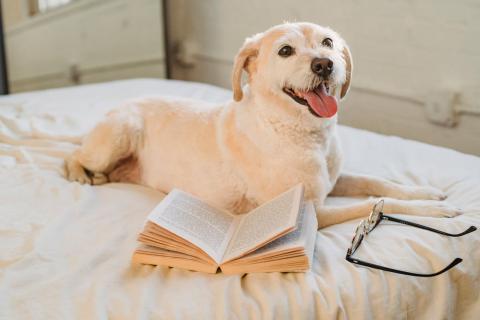
The belongings of Clover's clients represent so much about their lives and memories. Belongings can represent a wide range of things, from loving memories to traumatic baggage. For a deeper dive into understanding personal effects, we wanted to provide some resources on personal effects, heirlooms, decluttering and other physical object concerns.
Personal Effects
"Personal effects" is a legal term to define bodily personal property, usually items of particular significance that are carried or worn. In other words, they are belongings that go with you through your everyday life due to significance or use. They include:
- Jewelry
- Clothing
- Toiletries
- Culturally or religiously significant items
- Items required due to a disability or illness
- Pets
- Items related to personal interest and education
Personal effects are often examined in cases of injury, arrest, death or sometimes in cases of unique celebrity. They can tell a story of normalcy before disaster such as in the personal effects of victims of the World Trade Center attacks in 2001 or those of the survivors of the wreck of the Titanic in 1912 They can reflect the unique personalities of those who carried them, such as the sumptuous daily carry items of Marie Antoinette. They have been used in fiction to represent the importance of an item to its circumstances like in Hatchet by Gary Paulsen, Accordion Crimes by Annie Proulx, or The Gun by C.S. Forester. They can be used in fiction for comic relief and plot, such as Jake Blues receiving his personal effects at Joliet Prison in The Blues Brothers. Personal effects make a statement about the person that carries them and the world into which they are carried. Choose yours wisely.
Heirlooms
Heirlooms are items of value or significance that are passed through families for multiple generations. They differ from belongings or keepsake because they have been gifted more than once through family custom. If a parent gives a child something of significance either during their lifetime or in their will, it does not become an heirloom until it is handed down to a successive generation again. An alternative use of the word includes the planting of seeds from successive cultivation; choosing the best tomatoes for a few crops in a row to become the seeds for a whole new crop. Heirlooms are rare since items of value are often sold during difficult times and items of significance lose their impact through successive generations.
Most common heirlooms include:
- Jewelry
- Musical Instruments
- Clocks
- Recipes
- Photos
- Letters and Diaries
- Weapons
- Quilts
- Furniture
- Religious Books
Heirlooms have to have significance to the family, their experiences and the times they lived through in order to survive being handed down through generations. Some famous heirlooms include Marilyn Monroe's baby grand piano which belonged to her grandmother and was later passed down through her dance instructor's family, Lord Byron's dueling pistols handed down through the family of Greek poet Dionysius Solomós, and the secret recipe for Irn-Bru which is still handed down through generations of the Barr family in Scotland.
If you wish to establish a keepsake or belonging as an heirloom, you must either choose something that has already been given to you from a precedent generation of family or friends, or instruct the recipient to hand it down to their successive generation. To ensure the success of this process, we recommend researching and writing out the historical and family significance of the item. Our genealogy department here at the library would be happy to help you: https://www.ahml.info/research/genealogy
Family heirlooms and the impact of these physical objects on subsequent generations play an important part in these fictional books.
Unsure of what to keep, what to pass on down to the next generation and what to trash? These nonfiction Books about Heirlooms and Personal Effects can help you with those decisions.







